Beijing Olympics: What’s wrong with natural snow?
- Published
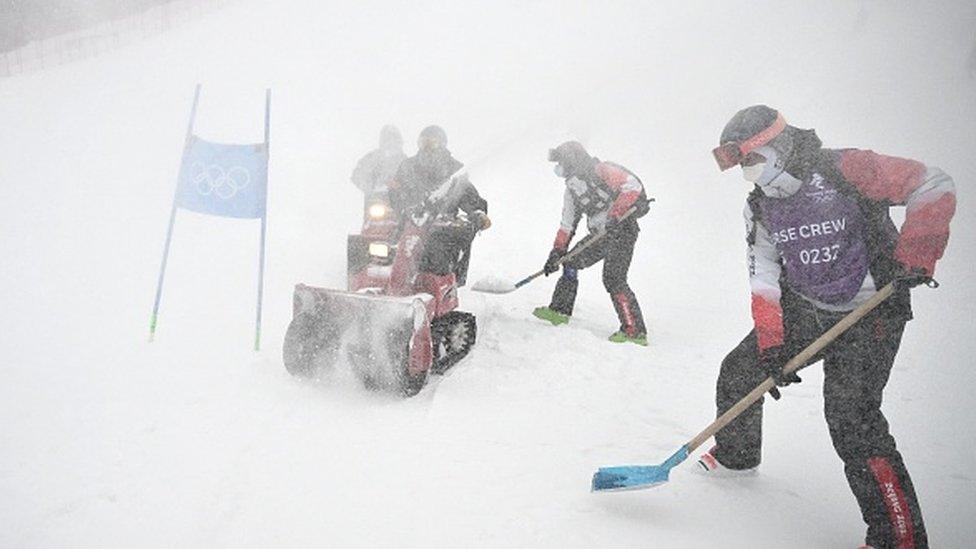
Natural snow has been cleared from the slopes in favour of artificial snow
Heavy snow has been falling on venues at the Beijing Olympics, yet the organisers are still pumping out artificial snow on to competition slopes, saying it's more suitable for the events.
Why is Beijing using artificial snow?
The organisers have insisted on using it to "ensure the quality" at the Games remains high.
Artificial snow was first used in winter sports in the 1980s. Vancouver 2010, Sochi 2014 and Pyeongchang 2018 all relied to some extent on artificial snow.
Beijing has very limited winter snowfall, and the volume of artificial snow used at these Games has reached an unprecedented high of more than 90%. The Yanqing National Alpine Ski Centre has relied almost entirely on the artificial variety.
It is estimated that 49m gallons (222.8m litres) of water have been used, external to produce millions of cubic metres of snow.
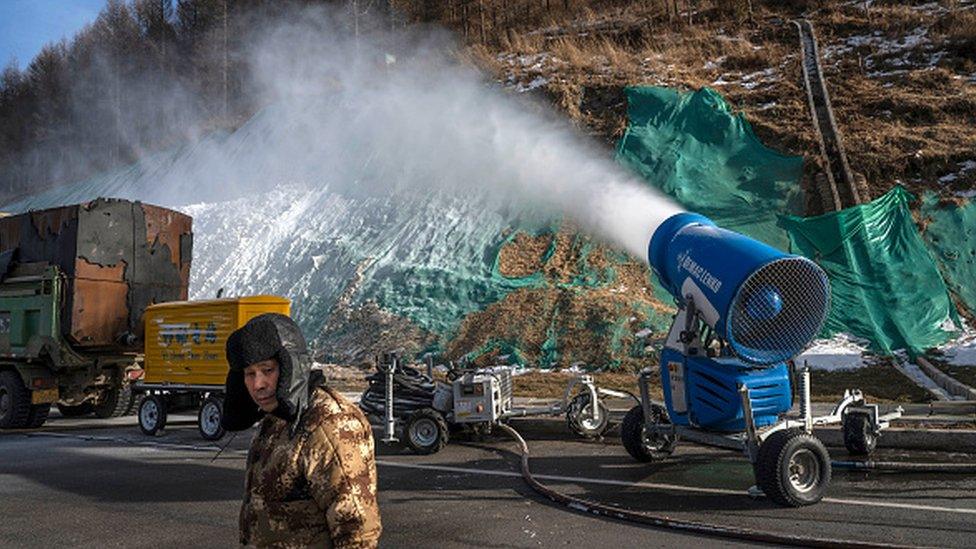
Volumes of artificial snow have reached unprecedented levels at these Olympics
Artificial v natural snow
Both are made of frozen water - but under the microscope the differences in their structure is clearly apparent.
Natural snow starts as crystals in cold clouds, forming elegant six-sided symmetrical snowflakes that grow as they fall to the ground.

Natural snow crystals (left) are less dense and not as hard as artificial snow (right)
Machine-made snow is far more dense, trapping far less air within its structure, external.
Which is better for winter sports?
With less air, and more ice, artificial snow is harder and wetter - and also icier, which makes it more suitable for some sports.
It's also easier to maintain a consistent quality throughout competitions, providing as similar conditions as possible for all participants.
Some new snow machines have an on-board computer system that can calculate the most suitable mix of water to produce snow with the same condition down a long ski slope.
"Artificial snow offers consistent and predictable slope conditions," according to the International Olympic Committee (IOC), external.
"The controllable and adaptable nature of man-made snow makes it a better fit than the natural version for developing ski courses for elite racing."
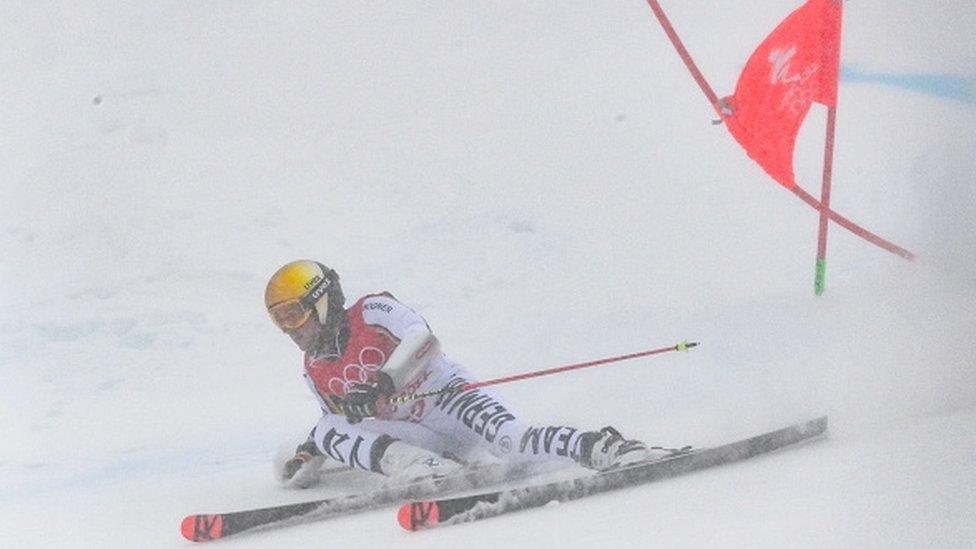
What do athletes think?
Not all competitors prefer the hard stuff.
Some skiers favour the dry, soft natural snow, as it provides a surface that skis can glide over easily, external.
Fresh snow also provides skiers and snowboarders with an almost weightless feeling and is often favoured by athletes who are flying off jumps, external.
The harder, faster artificial snow can also pose risks to athletes.
British freestyle skier Laura Donaldson told BBC Sport artificial snow could be dangerous.
"If freestyle super pipes are formed from snow-making machines in a poor season, the walls of the pipe are solid, vertical ice and the pipe floor is solid ice," she said. "This is dangerous for athletes."
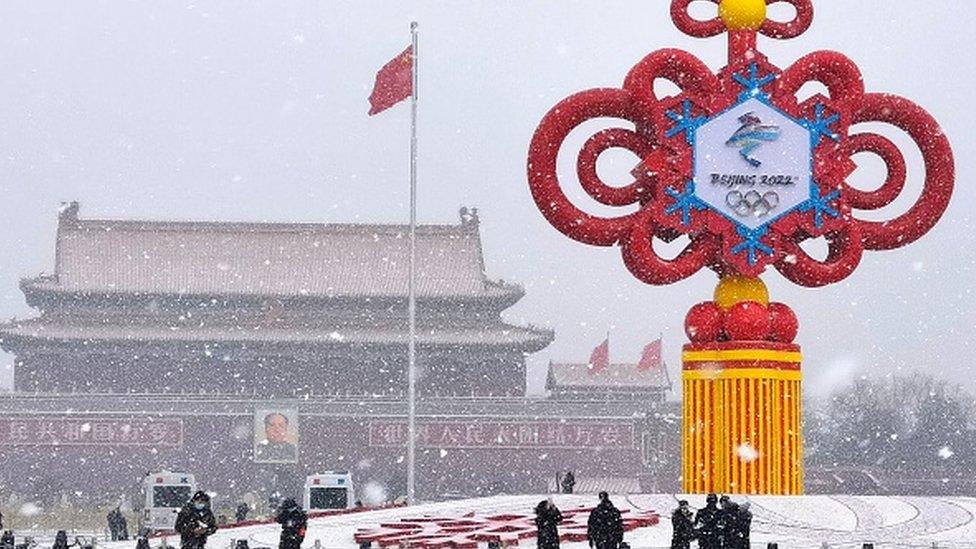
How green is artificial snow?
The process of producing artificial snow is both energy- and resource-intensive.
This was an issue that concerned the IOC when it was evaluating candidate cities to host the 2022 Winter Olympics.
It said Beijing's "reliance on artificial snowmaking would require [the] diversion of water from existing reservoirs and may impact other land uses".
Beijing insists the water used for the Olympics accounts for less than 2% of the local supply. It also says the snow cannons being used need 20% less energy than ones used in previous games.


Related topics
- Published26 January 2022
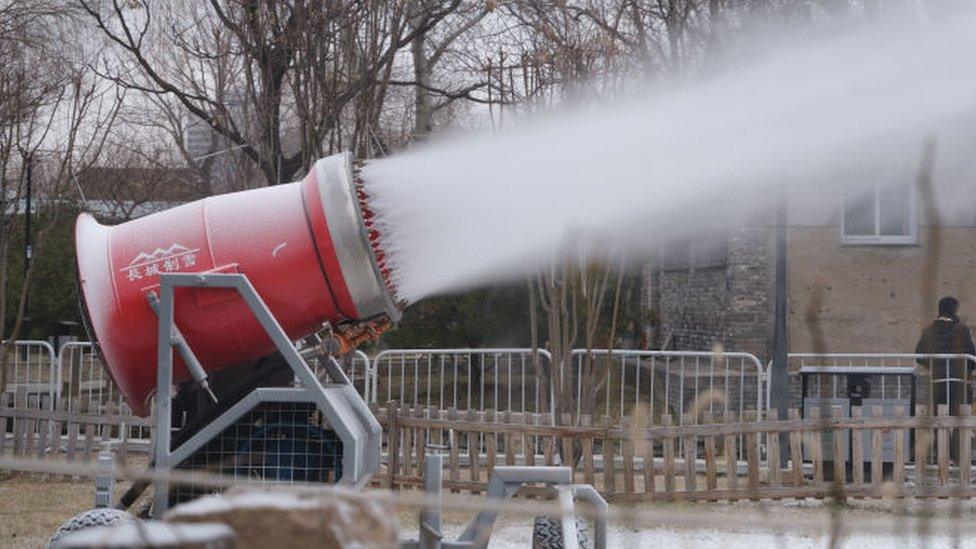
- Published16 January 2023
